Of the 20th-century artworks now considered seminal in some way – for forging new paths and founding movements, adding new artistic vocabulary and fresh ways of doing things to the canon – perhaps none were so little seen as the Cosmococas. For a long time, these works, created by the Brazilian artist Hélio Oiticica (1937–80) and film-maker Neville d’Almeida 50 years ago, were a clandestine activity, shown only to the closest of friends and even then, in the strictest of confidence. ‘It was our secret,’ d’Almeida tells me when I speak to him at the De La Warr Pavilion in Bexhill-on-Sea, at the opening of an exhibition of Oiticica’s work. ‘We knew!’
What d’Almeida and Oiticica knew was that the Cosmococas – a set of five light and sound works (plus detailed plans for several more) which surrounded and enclosed their audience in a way that anticipated contemporary immersive installations and environments but were unfamiliar to the art worlds of the early 1970s – might very well get them both into a lot of trouble, perhaps even ‘jail for life’ (or so they thought). The cause of that risk was the prominent place the works gave to an artistic material that remains an uncommon drawing medium to this day: cocaine.
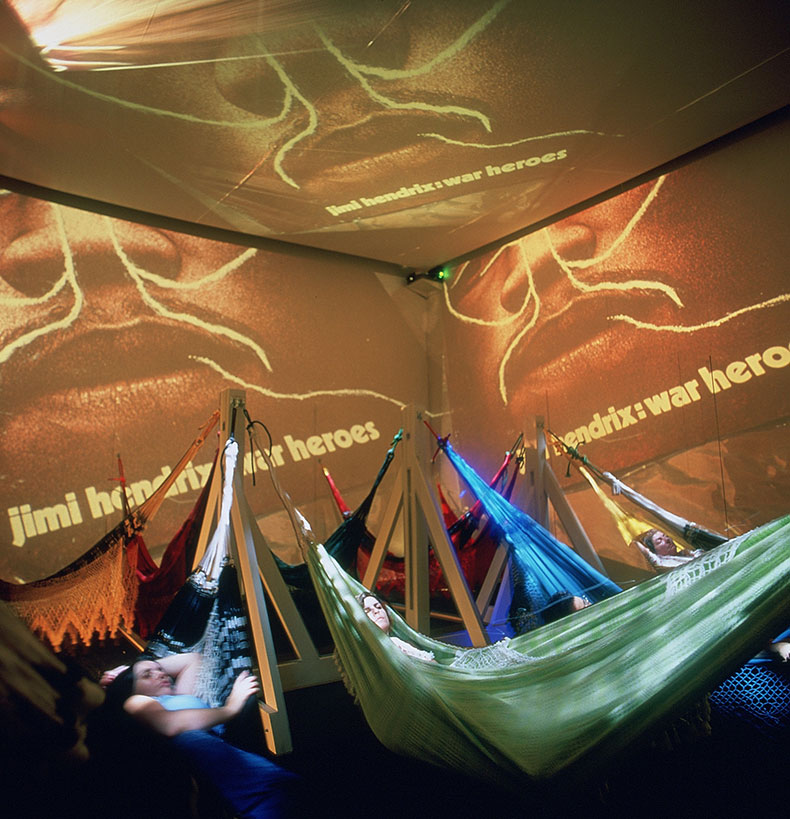
Installation view of CC5 Hendrix-War (1973), Hélio Oiticica and Neville D’Almeida. Pinacoteca do Estado de São Paulo. Photo: courtesy César and Claudio Oiticica
At the De La Warr, you can lounge on one of eight tasselled hammocks in bright red, blue or green and stare up and around at projected slides splashed across all four walls and the ceiling. The slides show the front of Jimi Hendrix’s posthumous album War Heroes (1972), bearing a portrait of the musician’s face. On the surface of the record sleeve, a small book of matches with a Coca-Cola logo has been placed on Hendrix’s chin, like a goatee, and thick lines of white powder snake from his nostrils up to his eyes and temples, as if tracing the very paths of the drug’s effect. Every few minutes, the five carefully positioned projectors click and the slides change. Each time we see the same record sleeve, but with different patterns drawn over them. The amount of cocaine used noticeably reduces with each subsequent image.
From a set of four speakers (one in each corner of the room) one of the tracks from the album, ‘Highway Chile’, plays at a volume that would certainly be quiet for a gig but feels loud for a museum. Lolling about on the hammocks, rocking back and forth watching the picture show and listening to the music, gallery-goers look supremely relaxed. But after a while, the combination of the psychedelic guitar playing and irregularly flashing projector lamps has a disorienting effect. It feels a bit like being in mid-air.
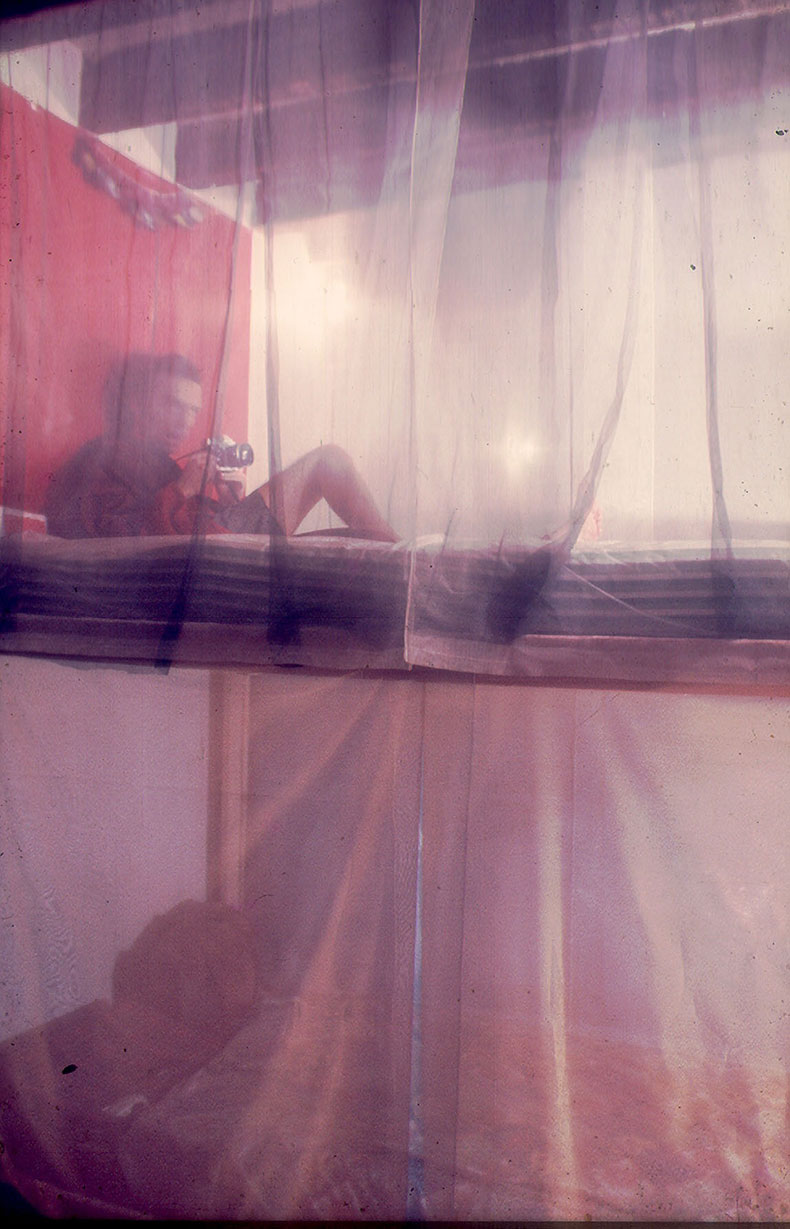
Babylonests (1971), Hélio Oiticica. Photo: Miguel Rio Branco; courtesy of César and Claudio Oiticica
This is a reproduction of CC5: Hendrix-War, the fifth and final work D’Almeida and Oiticica created together in 1973. The latter was living in New York at the time, in flight from the military dictatorship occupying Brazil. He had a loft at 81 Second Avenue and twice that year D’Almeida would hop on a flight to visit, staying with a brother who managed a restaurant in the city, but spending most of his time at Oiticica’s place ‘talking, talking, talking’. Since the 1950s, the East Village had been a centre of New York’s counterculture and judging by the images captured in his nephew César Oiticica Filho’s film Hélio Oiticica (2012), the softly-furnished Babylonests of the artist’s apartment, capsule-like spaces for work and play divided by draped fabrics, were very much a part of that. We see people lounging around, taking drugs and generally enjoying themselves. It was in this bohemian atmosphere that D’Almeida and Oiticica planed and built their Cosmococas.
‘We wanted to be radical,’ D’Almeida tells me, ‘to do something that was never done. So we came up this idea of a spatial intervention, to occupy the space with images.’ There were works based around images of Yoko Ono, Marilyn Monroe and Luis Buñuel as well as Hendrix, each one a carefully-selected thorn in the side of American conservatism. Within each installation, the artists placed myriad, pointed cultural references: a thin line of coke across Buñuel’s eye referenced the infamous sliced eyeball in the film Un Chien Andalou (1929). The hammocks in CC5, according to D’Almedia, referred to Hendrix’s time as a paratrooper in his early 20s: ‘He was between the sky and the floor. So that’s why there are these spatial sounds in his music, like Wahwahwahwah. Only someone who had been in the sky could do this.’
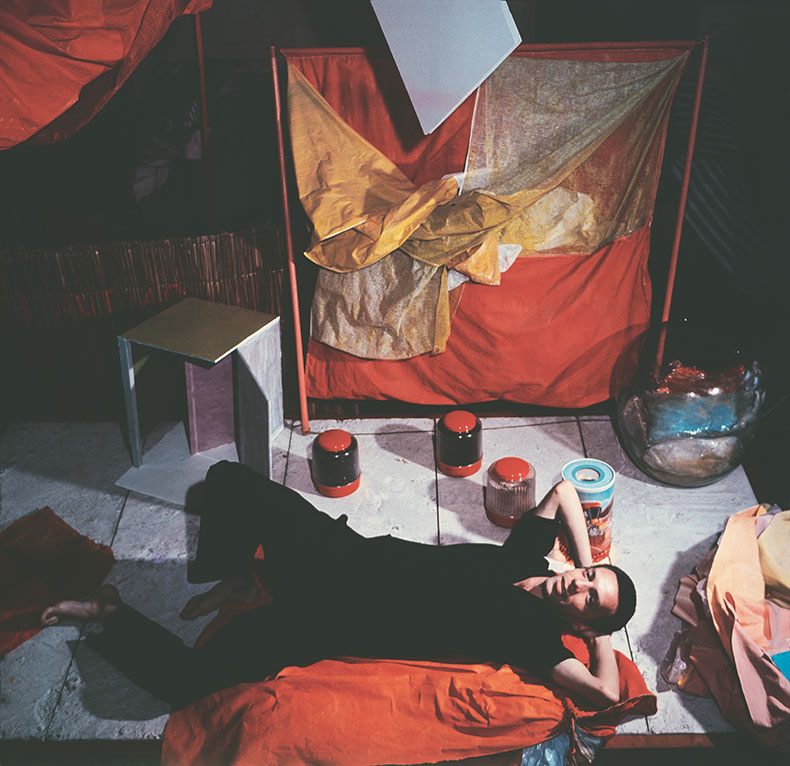
Hélio Oiticica at his atelier in Rio de Janeiro, 1965. Photo: Claudio Oiticica; courtesy César and Claudio Oiticica
D’Almeida and Oiticica first met a little over five years earlier in Brazil. D’Almeida had just made his first feature film, the nouvelle-vague-ish Jardim de Guerra (‘Garden of War’; 1970), only for it to be immediately banned by the authorities in his own country for its depictions of violence and official corruption. But the director was able to organise a small private screening at the request of his friend, the artist and poet Waly Salomão, and Salomão brought along his friend Oiticica. One scene in D’Almeida’s film has the young protagonist being shown a series of projected slides by the shadowy governmental organisation who have arrested him. Oiticica was immediately impressed. ‘He said: “I never saw slide projection in a movie. This is the first time in film history,”’ D’Almeida recalls. ‘I liked him at first sight, and we became friends that day. We went to his house and kept on talking. And we decided to do a work together that could be a bridge between film and art.’
D’Almeida and Oiticica’s collaboration had a long gestation. But then Oiticica was never one to do things in a rush. The Cosmococas represented, for him, an example of what he called ‘creleisure’ (or ‘crelezar’ in Portuguese), a kind of productive, spiritualised downtime (punning not just on ‘creative leisure’ but also creer, Portuguese for ‘belief’). It stood for the utopian eradication of any distinction between work and play, for forms of recreation raised to the status of ecstatic ritual. Cocaine, then, represented processes of transformation and transmigration – between its commonplace acceptance in early 20th-century bourgeois society and the then-recently declared War on Drugs, between North and South America as the former imported drugs from the latter and exported CIA-supported dictatorships in return, and between different states of mind or states of being. ‘We did not make parties!’ D’Almeida repeatedly insists to me. I suspect he protests too much. At a moment contemporary with the first discotheques and club-happening hybrid events at venues like The Loft and The Sanctuary in New York, Oiticica and D’Almeida developed a form of art with the potential to erase the distinction between party and performance, between spectator and participant, between observing and experiencing. ‘Today we live in immersion,’ D’Almeida says. ‘We invented that! We did all of that.’
‘Hélio Oiticica: Waiting for the internal sun’ is at the De La Warr Pavilion, Bexhill-on-Sea until 14 January 2024.
Unlimited access from just $16 every 3 months
Subscribe to get unlimited and exclusive access to the top art stories, interviews and exhibition reviews.

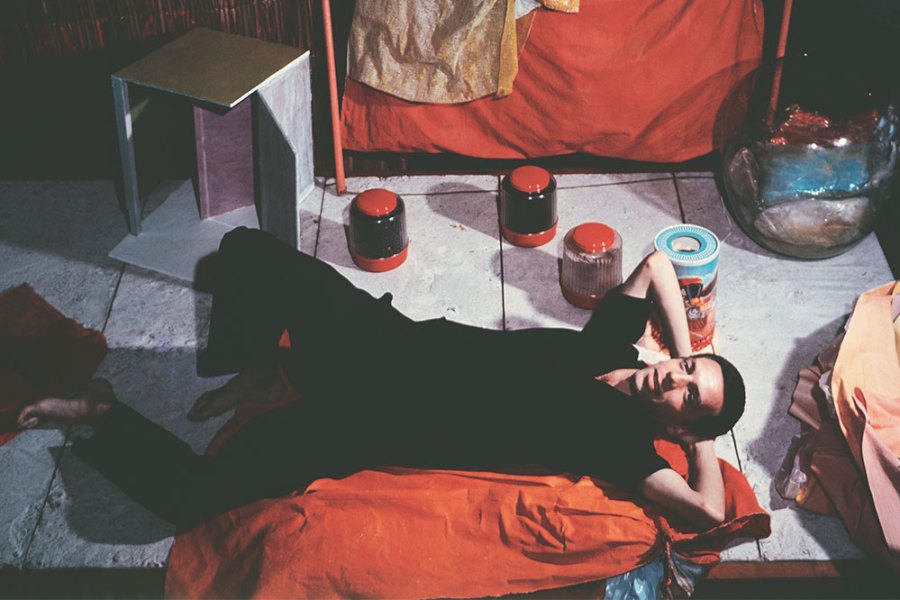
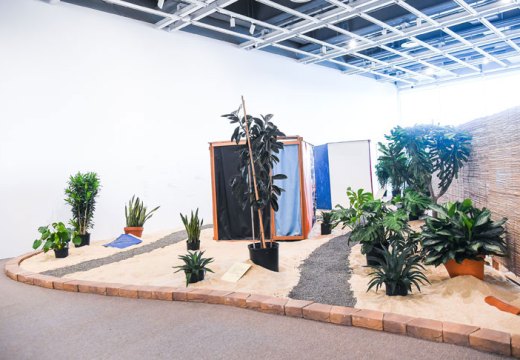











![Masterpiece [Re]discovery 2022. Photo: Ben Fisher Photography, courtesy of Masterpiece London](http://www.apollo-magazine.com/wp-content/uploads/2022/07/MPL2022_4263.jpg)
It’s time for the government of London to return to its rightful home